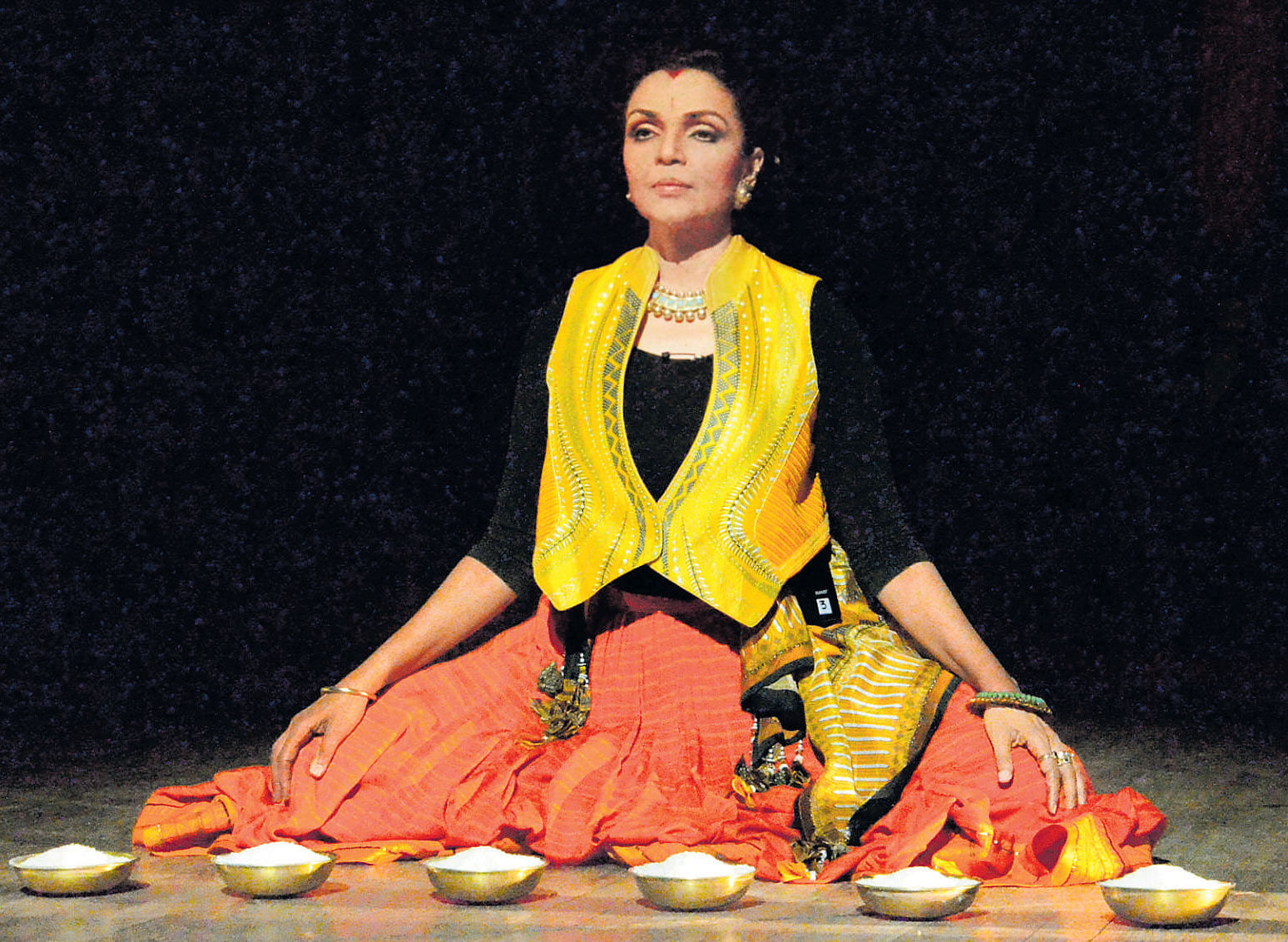
There is no Rama without Sita,” asserts distinguished dancer Anita Ratnam. And she is not making a romantic declaration. “If Sita had not followed Rama into the forest, there would be no story; if Sita had not refused to escape with Hanuman from Ravana’s pleasure gardens, how would have Rama achieved all that glory?”
Anita Ratnam’s fervent tirade mirrors her impassioned and fiery performance in her solo production, ‘A Million Sitas’, that has evolved into a contemporary and fearless commentary on women, feminism and patriarchy; a retelling that questions established notions of virtue, heroism and justice.
Always a courageous performer, Anita Ratnam has often cocked a snook at conventional narratives and unquestioned sabha cultures. “I have always walked the talk and that has clearly not sat very well with purists — but I cannot be any other way. I cannot do sabha-pleasing work,” she asserts. Coming from a family full of pioneers and high achievers, Anita says she never looked beyond for inspiration. “I don’t deliberately go out to ruffle feathers; I do work that intrigues and resonates with me, and I can only hope that the audience also likes what I am convinced about,” she says, explaining her creative process. She adds, for good measure, that her problem lies not with classical dance, but with the trivialisation of it because of nepotism. “I am appalled at the way arts are being represented, and the falling standards,” she laments.
Out of such a churn was born her much-lauded solo production ‘A Million Sitas’, which Anita recently performed to great acclaim at the UN conference on films in New Delhi. A production that originally began as a traditional dance-theatre performance has today evolved into a storytelling, intimate act in which bharatanatyam is referenced with a light touch, and the story arc moves along on the lines of rhythm, movement and words.
Sita, her muse
I ask Anita about the intriguing title and she tells me how she sees Sita as the central figure (and catalyst) in the epic. “Ramayana is actually Sita’s and all its other women protagonists’ story — I look at it as the tale of the courageous Sita, the astute politician Manthara, the vilified Ahalya and the sexually-aggressive Surpanakha. These women were feminists before feminism, and they suffered for using their intellect, for taking the lead in relationships (like in the case of Surpanakha), and for refusing to be mere trophy wives for husbands disinterested in them (as in Ahalya’s story).”
Anita compares Sita to a dandelion that manages to bloom even between cracks of stone and cement. “She thrived despite the injustice meted out to her, the constant suspicion and humiliation. No matter how right-wingers justify Rama’s actions, he will remain, in a sense, a metaphor for violence and subjugation of women,” she says.
Anita’s research for the production involved going through several retellings of the Ramayana — Oriya, Telugu, Kannada, Bengali and Jain — being prominent among them. She believes the Ramayana was originally meant to be read and interpreted as the human story of a prince but after Tulsidas’s version, Rama was elevated to the status of a God and thus became ‘untouchable’. “Our gods are full of flaws, and it is important for us to look at our tales and mythologies with an objective eye,” she says.
I am curious about how easy or difficult it is to portray such complex thoughts in a solo stage performance. “I never leave the stage but I use several props: various instruments from Spain, Chile and Africa, reversible skirts, cymbals and drums; I use Venetian queen headdresses and long Thai nails. I use the rhythm of my body to depict character changes and illuminate Sita’s story; I try to flesh out the contours of the other women in the epic with my movements and my bols,” she explains.
Anita has always been an ‘intersectionist’ — her work has weaved together theatre, harikatha, classical dance and drama, among others. Having had more than 1,300 performances in over 37 countries to her credit, Anita is also the founder of narthaki.com, one of the largest portals on Indian dance forms. She calls her style ‘Neo Bharatam’ and uses her art to “provoke and resist”, as she puts it.
Classical & modern
“Classical arts cannot play that role…they are wedded to lyrics and rhythm, and I love them for it. But the context of performances has to change if they have to reflect the unpredictability and chaos of today’s world. You cannot do that with a varnam,” she says when I ask her about her views on contemporising classical dance forms.
Anita believes her experience as a journalist in New York has given her objectivity and the ability to look deeply at established histories. “We are shadowed by Sita in our lives — we see her everywhere, we are given her example, we are wedded with songs dedicated to her, and yet, our daughters are rarely named Sita. We will call our daughters Maithili and Janaki, but hesitate to use those two letters. Why is this blatant contradiction accepted without introspection? The Rama coronation image that we live with is a lie — the story did not end there. Why do we escape the fact that a pregnant woman was banished to the forest because of hearsay? Why does nobody question this?” she asks passionately.
Reflections such as these inspire Anita to reimagine. She believes the time has come for a movement to counter brute power under the guise of masculinity. “It is already happening…women are rediscovering stories globally, and it is only through stories and the arts that resistance is possible. Art is prophetic and not without reason,” she states.
A warning bell for the Ramas and the Ravanas of these times? Perhaps.